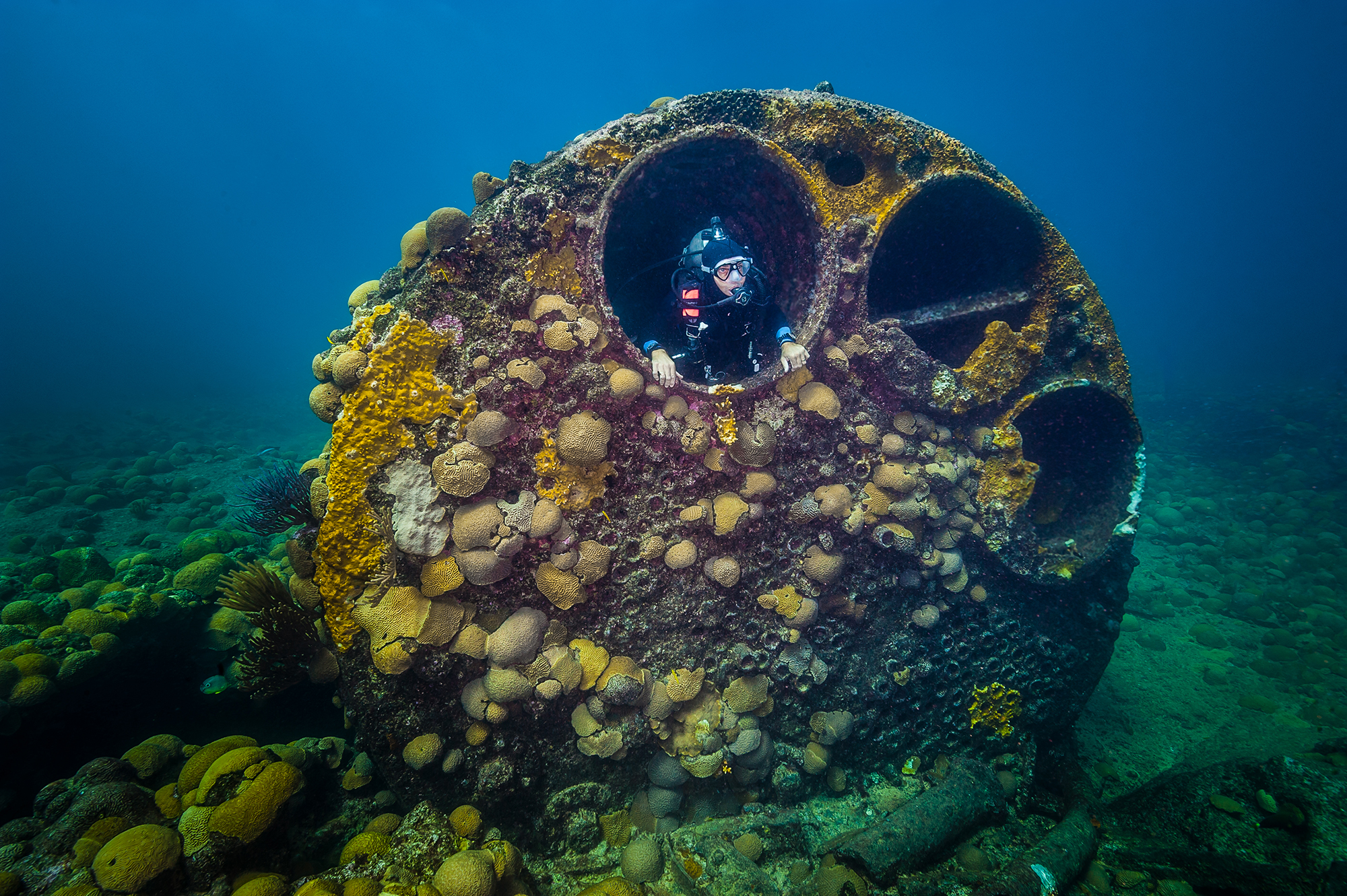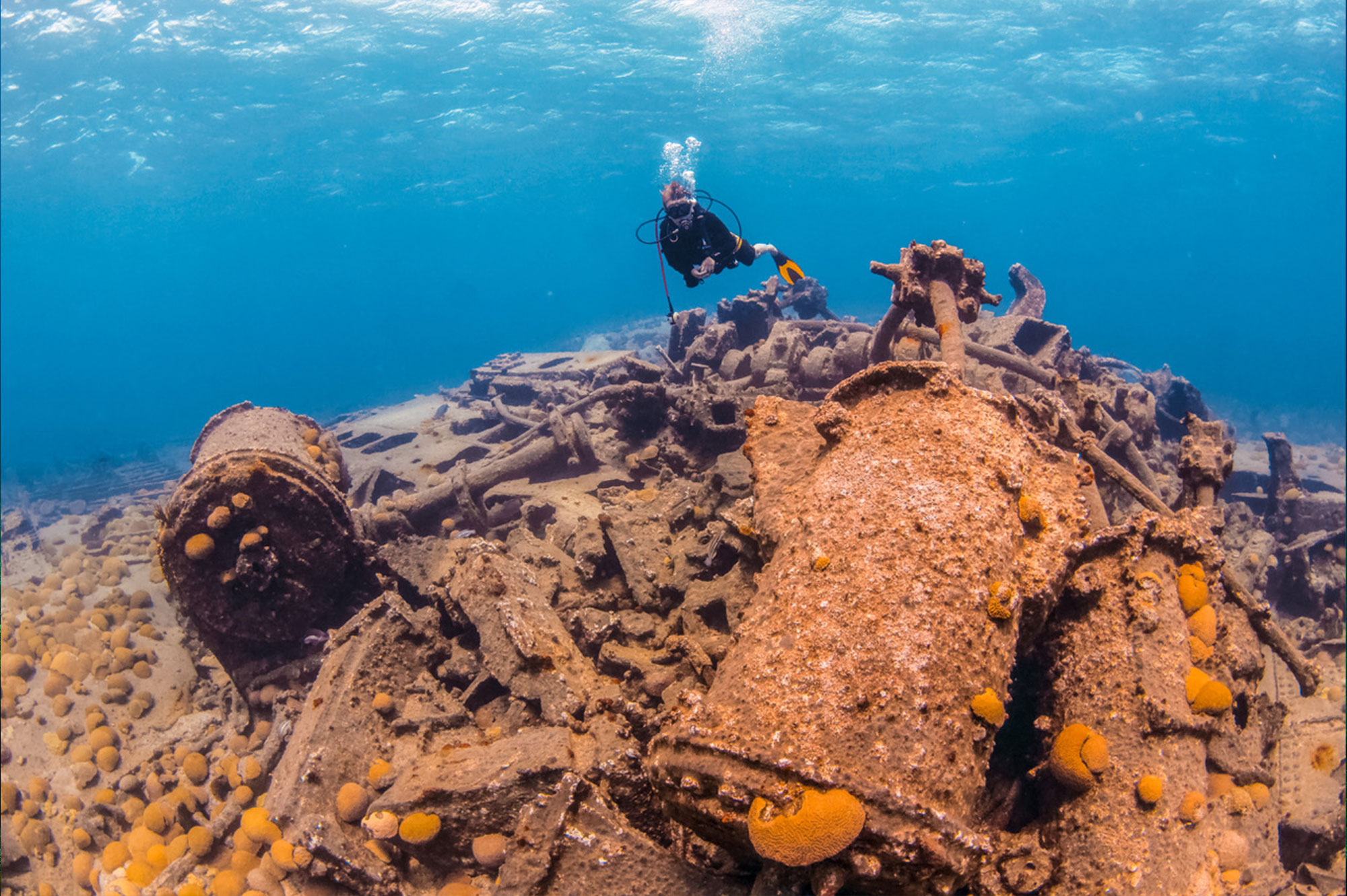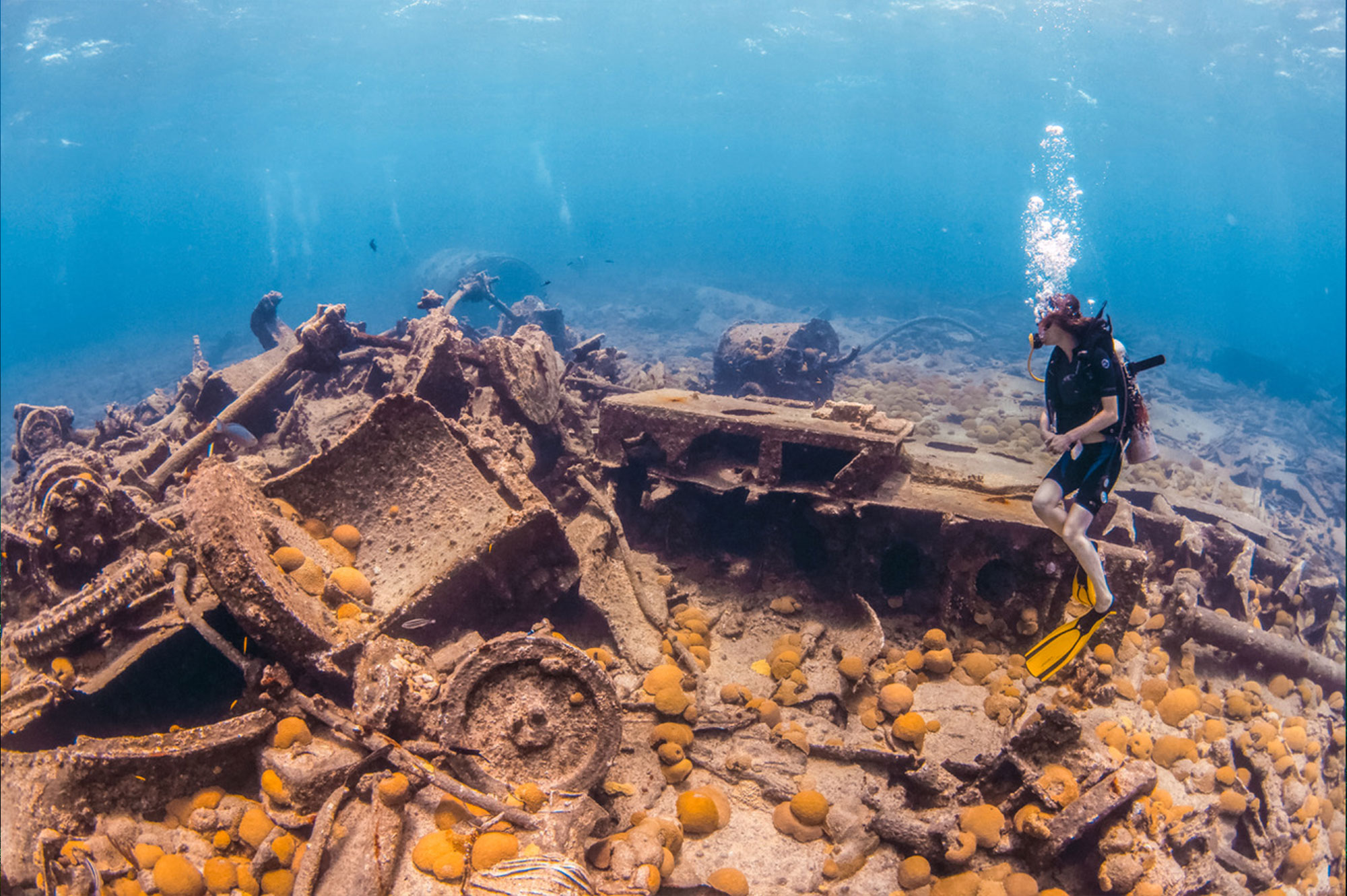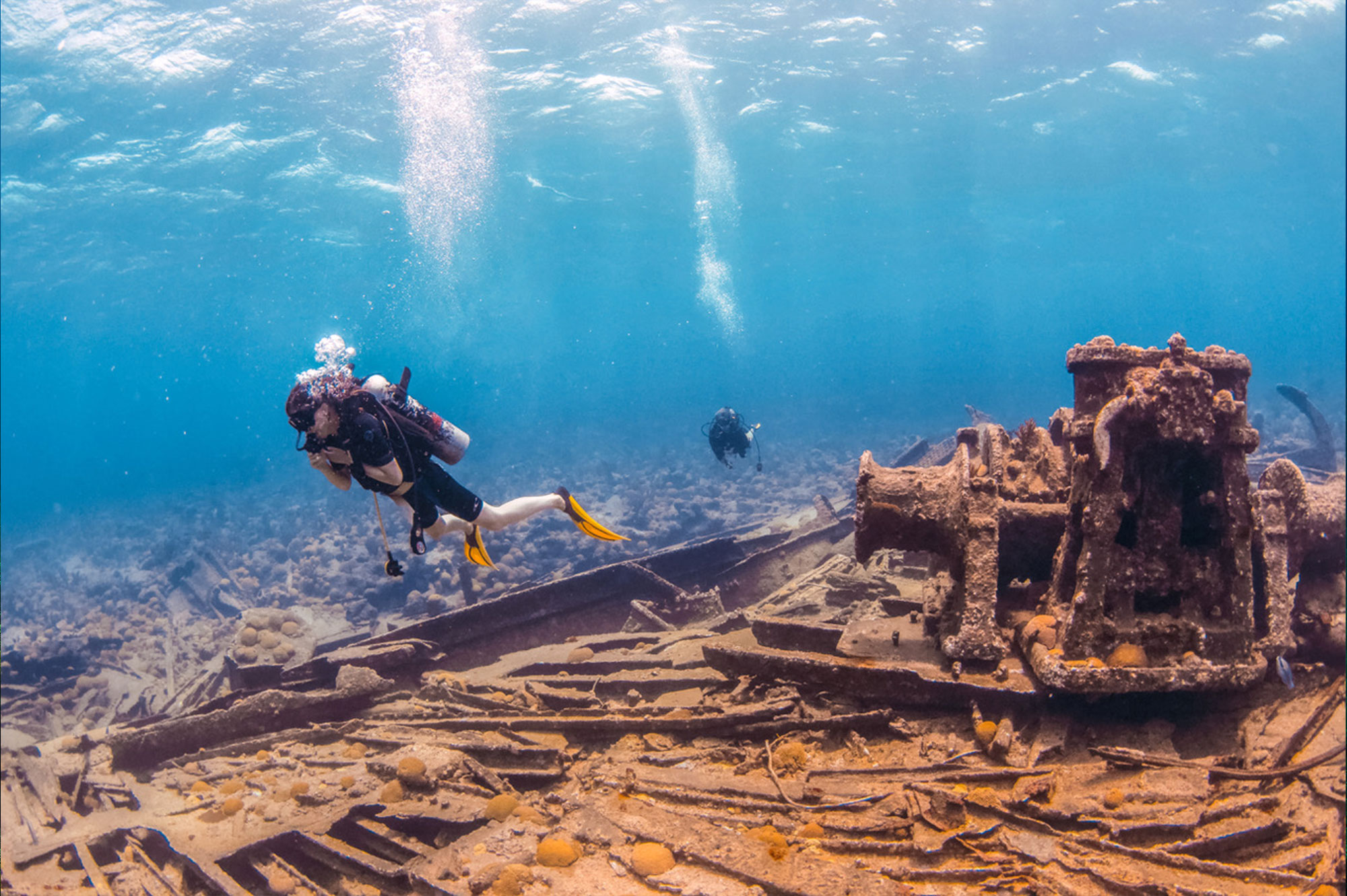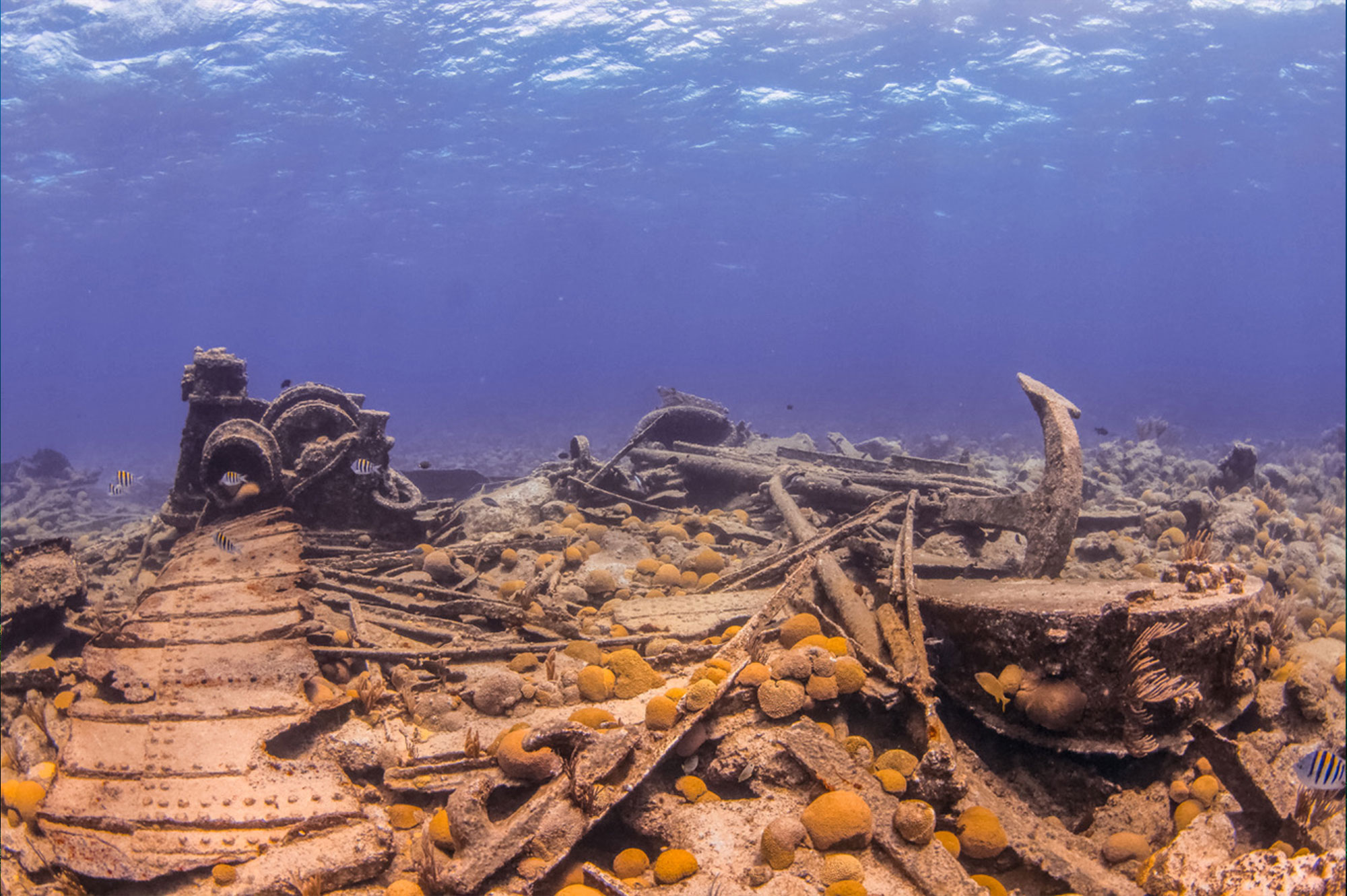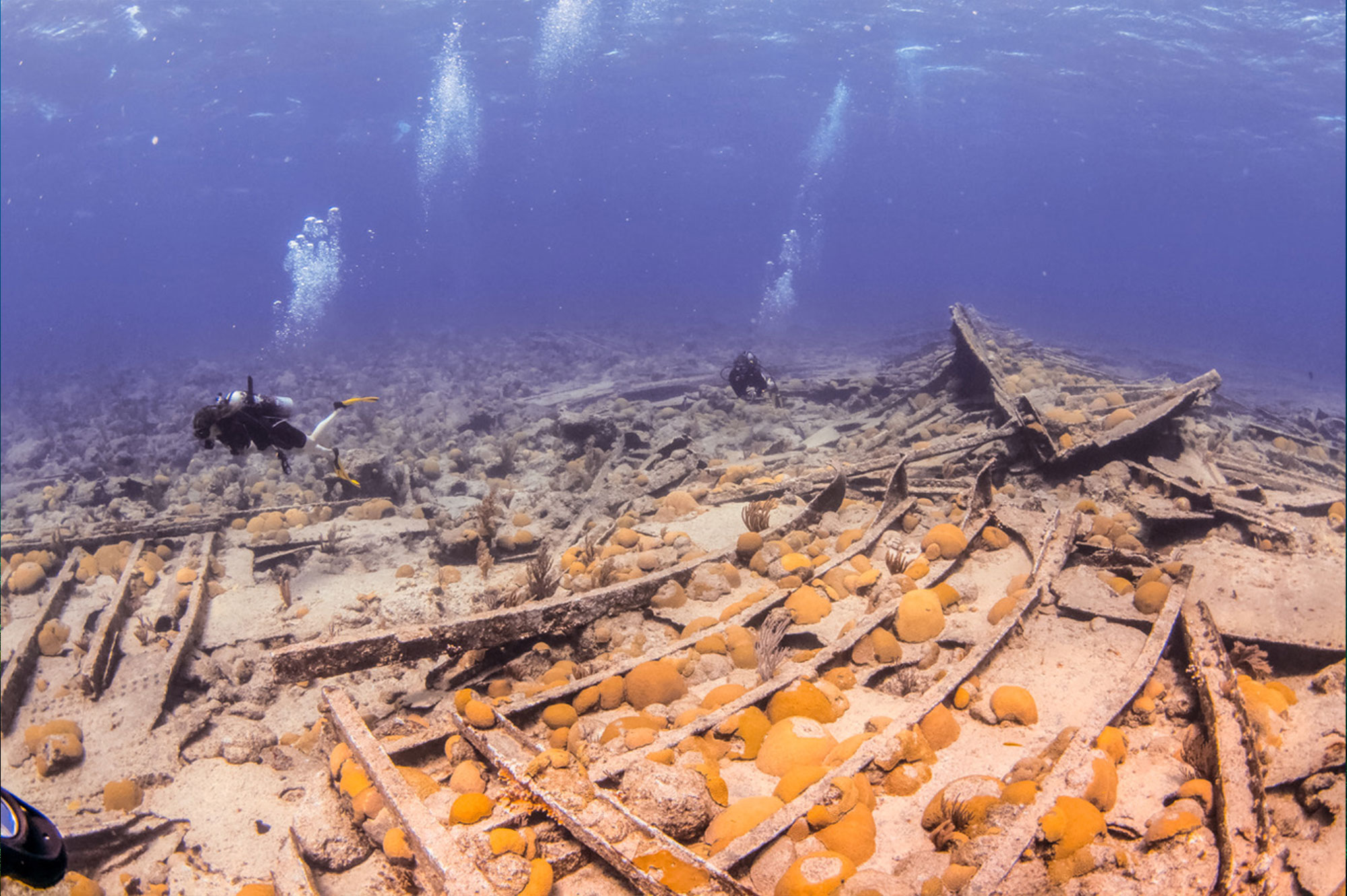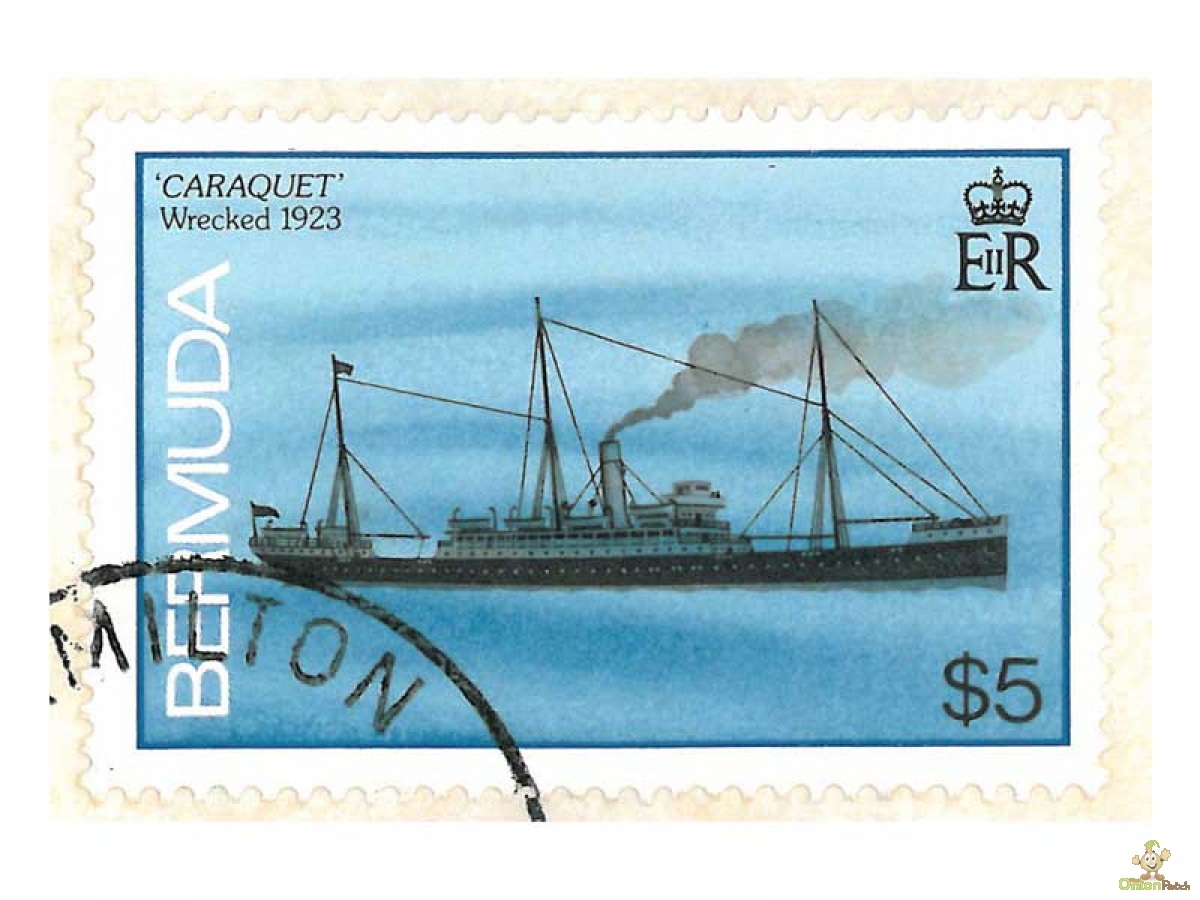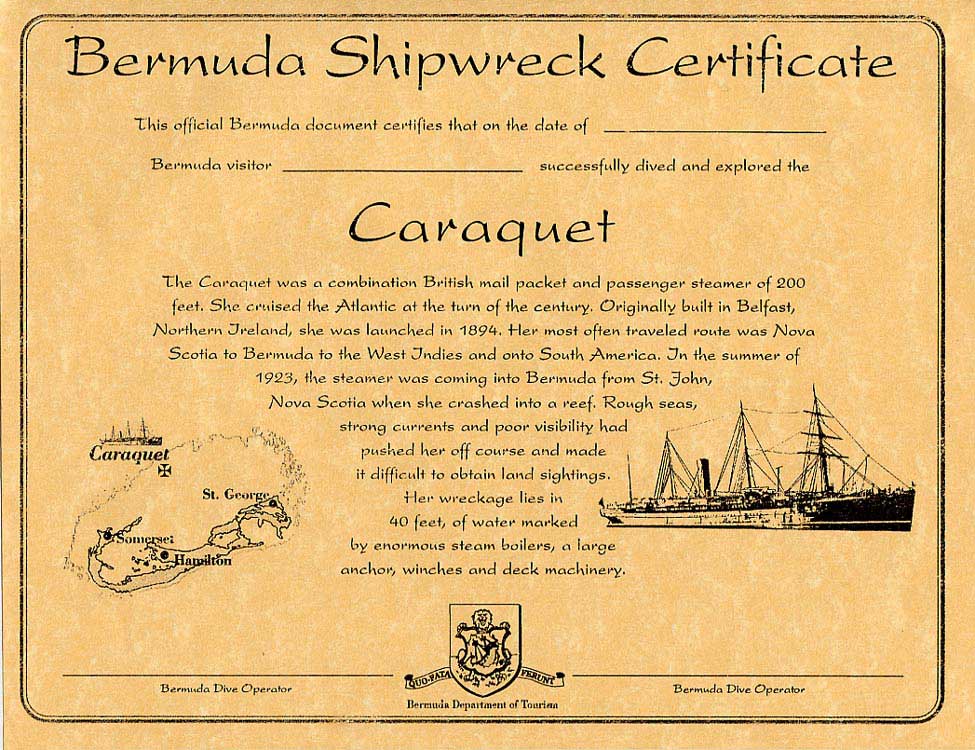Built in 1894 in Belfast, Northern Ireland, this British Mail packet and passenger steamer was originally named the Guelph. She was renamed the Caraquet after the vessel was acquired by the Royal Steam Packet Company in 1913. On June 25, 1923, while en route from the British Virgin Islands to Halifax, the vessel sank after hitting rough seas. Captain Fernandez was exonerated of any blame after the Marine Board of Inquiry found that an abnormally strong current had pushed the Caraquet further than the captain had calculated. The ship foundered on Bermuda’s northern barrier reef approximately 16 kilometers northwest of Fort St. Catherine. The Caraquet was extensively salvaged by Herbie Smith at the time of her sinking and then again after World War II, removing the larger portions of the non-ferrous metal components of the ship, including coils, conductors and propellers made of copper brass or bronze. There remains little of value that could be easily removed from the wreck site.
CURRENT CONDITION
Broken up by ocean swells, the wreckage is spread out over a wide area covering almost two acres in up to 45 feet of water. The most distinctive portions of the wreck include her engine, four prominent boilers (the large tin can-shaped units in which steam pressure built up to power the engine), two large deck winches and her massive anchor lying on one side with a fluke pointing straight up. Look out for a possible aggregation yellow grunts in the spring that turn a shade of blue when they spawn. The wreck site is celebrated for its extensive wreckage in shallow clear water, and it is considered a very good shipwreck dive, except when winter storms batter the Caraquet. The wreck was never lost and was always known as a fishing site.
STATISTICS
Location: 32°27'47.09"N, 64°47'17.06"W Length: 200 feet (61 meters) Depth: 45 feet (14 meters) Protected Area Radius - No Fishing: 300m




